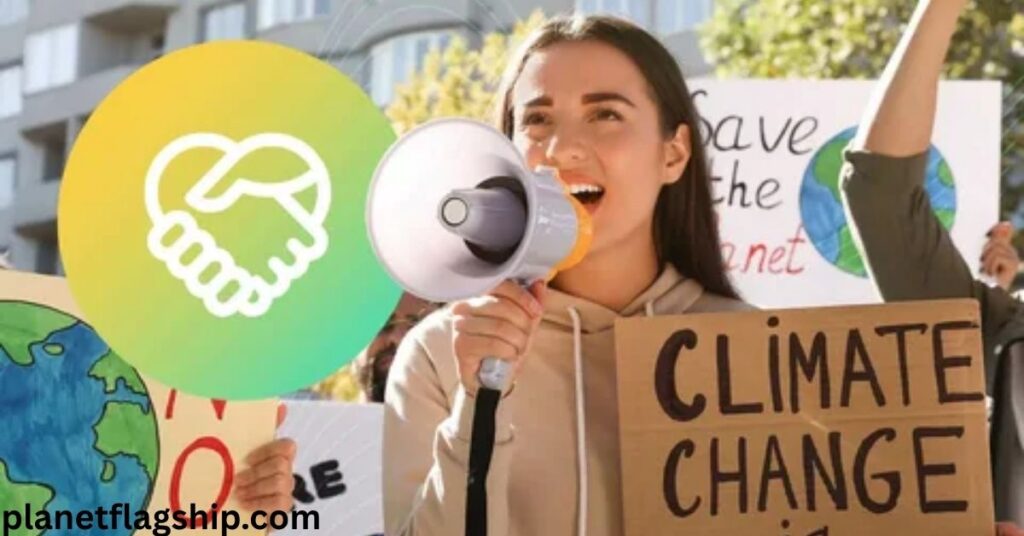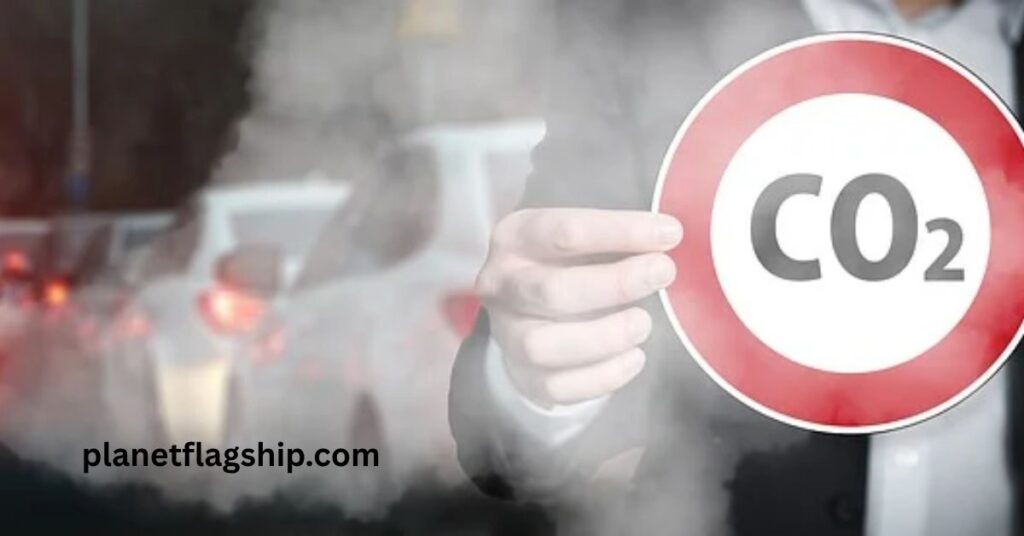Introduction
In recent years, the climate change crisis has inspired a new generation of activists. There is a connection between social justice and climate change, which is causing more damage to vulnerable communities. Over time, the severity of climate change has increased as it continuously causes catastrophic events and damage to human lives, property, and infrastructure. They are demanding the change and also actively leading the charge for climate justice. As they are the future, they are stepping into roles like organizers, educators, and innovators, advocating for equitable environmental policies.
From grassroots to international legal actions, they employ various strategies to hold governments and corporations accountable. Their efforts are not only reshaping public discussions but also influencing policy decisions at the highest levels. This article describes the roles youth activists play in the climate justice movement, highlighting key factors, organizations, initiatives, and innovative solutions. In short, they play a crucial role and pave the way forward towards a more sustainable future.
The rise of Youth Climate Activism

Over the past few decades, youth-led climate activism has emerged and evolved into a global phenomenon. The first activity that acted as a catalyst was the “Fridays for Future” movement, launched in 2018 by Swedish activist Greta Thunberg. It was a school strike outside the Swedish Parliament that sparked a worldwide impact. Then, Vanessa Nakate (Uganda), a prominent African Climate activist, highlights the intersection of climate justice and African communities. Another notable advocate is Licypriya Kangujam (India), who advocates for climate education in schools and has spoken at global climate forums.
By 2019, over 4 million young people participated in the global climate strike, making it one of the largest environmental protests in history. Youth movements, such as the Sunrise Movement (USA), the Climate Strike in Canada, and Zero Hour, have since emerged. Most of the impacts are faced by the most vulnerable societies in the world and need to be addressed. There should be a balance between social justice and the impacts of climate change. The young activist also raises awareness about the role of gender in this issue.
Young activists are spearheading the global climate movement, employing different methods to advance environmental justice and policy reform. They operate from grassroots mobilization to international campaigns and innovative solutions specially crafted for local contexts. In the Pacific, World’s Youth for Climate Justice (WYCJ) was conceived from a 2019 campaign led by 27 law students at the University of the South Pacific.
They had asked for an Advisory Opinion from the International Court of Justice to obtain clarification on the state’s obligations to ensure and protect current and future generations against the impacts of climate change. The movement has since galvanized youth worldwide to demand legal accountability for climate devastation.
In Africa, Ugandan activist and UNICEF Goodwill Ambassador Vanessa Nakate focuses on the disproportionate effects of climate change on Africans, who emit minimal greenhouse gases. She initiated the Rise Up Movement to amplify African voices in climate conversations, particularly concerning drought-related food and water shortages in the Horn of Africa. Leah Namugerwa of Uganda leads tree-planting initiatives and advocates for green policies, including the implementation of plastic bag bans.
Young activists throughout Asia are creating localized solutions. Nida Yousaf Sheikh’s Tayaba organization in Pakistan, for instance, combats water shortages by supplying H2O Wheels, a type of water machinery that facilitates the transportation of water. Tayaba also distributes reusable menstrual hygiene items and recycled soap to climate-disaster zones, using blockchain technology to verify equitable distribution. Sahithi Radha, 16, from India, created E-Cycl India, which addresses the recycling of electronic waste and promotes awareness about proper disposal, thereby preventing environmental hazards.
Young people also get involved at the international level. At COP29, representatives of young people from the Asia-Pacific region, via the Youth Empowerment in Climate Action Platform (YECAP), called for just energy transitions and the protection of Indigenous peoples’ rights. They called for participation in climate policy-making that mattered, noting that young people are not merely future leaders but also change-makers of today.
Ayshka Najib of the UAE is the Fridays for Future MAPA leader in the Middle East with a mandate to engage with the most affected communities. Her activism, grounded in her firsthand experience of climate disasters, aims to raise awareness about the voices that are not being heard in global climate talks.
These instances show the diverse roles that young activists are playing in the fight against global warming. Through legal action, local movements, and global initiatives, they are making remarkable progress in advancing environmental justice and sustainability.
SEE ALSO: How Climate Change Is Creating a New Class of Refugees?
Key achievements
All these youth-led climate justice movements have some achievements:
Policy Influence
The UK’s net-zero emissions targets by 2050 are the result of pressure from youth activists.
Climate Litigation
In 2019, a group of young people, including Greta Thunberg, filed a complaint with the UN Committee on the Rights of the Child, accusing several nations of violating their rights by failing to curb emissions.
Environmental Education
In countries like Italy, youth-led initiatives resulted in the integration of climate education into the national curriculum.
Corporate Accountability
Youth pressure has led several large corporations to commit to sustainability goals, divest from fossil fuels, and improve environmental transparency.
Challenges faced by youth activists

Political Pushback
Political leaders dismiss many young activists. Some have even been targeted for their views, as seen in an online attack on Greta Thunberg.
Resource Constraints
Most youth movements operate on minimal budgets, often self-funding their initiatives. They require additional resources, funding, and support from governments, civil society, and institutions.
Mental Health Strains
The constant exposure to climate-related crises and the pressure to bring change can lead to mental health issues.
Security Risks
In countries where governments are planned or where environmental activism is in danger, youth activists face threats, harassment, or even arrests.
What can be done
Community-led initiatives, such as the proper use of social media, school tree planting activities, CO2 talks, etc.

FAQs: How Youth Activists Are Leading the Fight for Climate Change
Why are youth activists so important in the climate movement?
Youth activists are driving the climate movement because they represent the generation that will face the worst impacts. They bring fresh energy, urgency, and creative solutions to push governments and corporations to act now not later.
What makes youth-led climate activism different from traditional environmental efforts?
Young people often combine climate action with social justice, demanding fairness for vulnerable groups. Their activism is bold, inclusive, and often driven by digital tools, allowing them to spread their message fast and globally.
How have youth activists influenced real policy change?
Youth-led protests, climate strikes, and global campaigns have pushed world leaders to adopt stronger climate goals. For instance, Greta Thunberg’s school strike movement inspired millions and led to policy shifts in several countries.
What challenges do young climate activists face?
Despite their passion, youth activists often struggle to be taken seriously by political leaders. Many face online harassment, lack resources, or come from communities already suffering from climate impacts.
How can we support youth climate activists?
Support can come through funding their projects, sharing their messages, voting for climate-conscious leaders, and creating space for them in decision-making forums. Listening to their voices is the first step to real change.
Conclusion
By highlighting climate change as a matter of justice and equity, youth activism made the issue more urgent, as there is no Plan B. They have shown that the Earth is the home to all, and it’s not a distant battle but a necessity. Despite facing hurdles such as systemic barriers, limited resources, and emotional tolls, they continue to inspire, educate, and organize. They are also providing sustainable solutions. As it’s the right of every human being to have access to clean air, water, and land to live a peaceful life on this planet, which is our shared home, that’s a fundamental principle. Developed countries need to invest in developing or underdeveloped countries, as they are the top category of polluters.
There is a need to increase funding and support from the government, institutions, and civil society. The fight for climate justice is long and complex, but results can already be seen. There is hope for a more sustainable future. The world is finally beginning to listen, and it must act. As it’s not a myth, it’s a global problem today that should be continuously addressed and tackled properly; otherwise, the severity of the consequences will definitely increase.
References
United Nations Climate Change. (2023). Youth and Climate Change. https://unfccc.int/topics/education-and-youth
National Geographic. (2020). Youth Climate Movement is Growing Up. https://www.nationalgeographic.com
BBC News. (2022). Climate Activists: Young Voices Changing the World. https://www.bbc.com/news/science-environment
Nature. (2021). Youth Climate Activism and Mental Health. https://www.nature.com/articles/d41586-021-01970-4

John is a professional blogger and passionate advocate for environmental sustainability. With years of experience exploring eco-friendly practices and green innovations, he shares insightful articles on Planet Flagship to inspire a sustainable future. John’s expertise lies in making complex environmental topics accessible and actionable, empowering readers to make meaningful changes for the planet.
